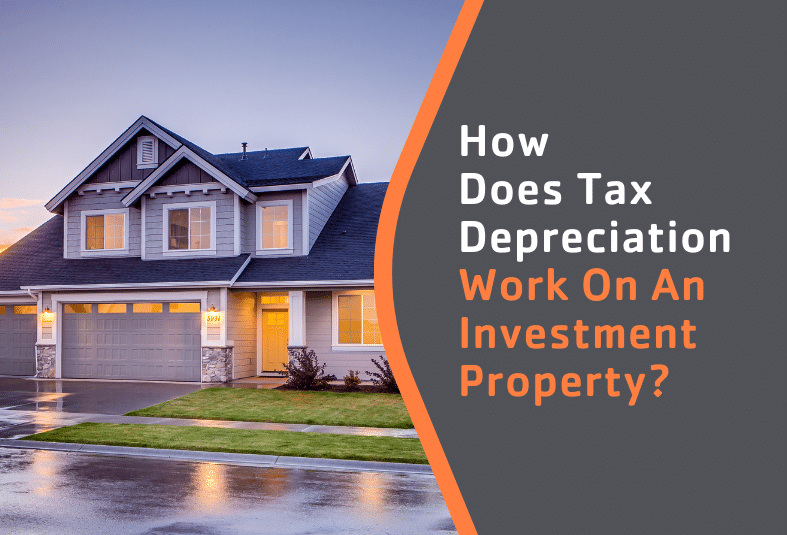Owning property goes beyond the obvious benefits of rental income and an increase in property value. A significant, yet often overlooked, advantage is property tax depreciation. Many property investors miss out on claiming thousands of dollars due to a lack of awareness or understanding of this concept. Whether you’re a seasoned property owner or just starting out, grasping the ins and outs of tax depreciation is essential for maximising the value of your investments.
Table of Contents
What is Property Depreciation?
Over time, both a building and its contents naturally wear out or ‘depreciate’. The ATO recognises this decline in value, allowing owners of income-producing properties to claim this depreciation as a tax deduction, offsetting the property’s decline in value against taxable income. This covers both the physical structure and the assets within it, from roof tiles to kitchen appliances.
Maximising Your Claim: What’s Included?
Depreciation deductions fall into two main categories:
Division 43: Capital Works Allowance
The capital works allowance is related to claims for the wear and tear that occurs to the structure of the property and any fixed items. Capital works include items like the roof, walls, doors, kitchen cupboards, bathroom tubs and toilet bowls.
Generally, any residential building where construction started after 15 September 1987 will entitle its owner to capital works deductions. These deductions can be claimed at a rate of 2.5 per cent per year for up to forty years.
Division 40: Plant and Equipment Depreciation
Plant and equipment depreciation can be claimed for the easily removable fixtures and fittings found within the property. There are more than 6,000 different depreciable assets recognised by the ATO, including items like carpets, blinds, air conditioners, hot water systems smoke alarms and ceiling fans. Each plant and equipment asset is assigned an individual effective life and depreciation rate.
How Do You Calculate the Depreciation of a Property?
Navigating property depreciation doesn’t need to be complex. Carbon can connect you with top tax depreciation experts to streamline this process and ensure you get the most out of your investments. Here’s why you should consider professional help:
- Expertise and Accuracy: Tax depreciation specialists have the knowledge and tools to maximise your depreciation deductions accurately.
- Direct Liaison: If you’re collaborating with a Carbon accountant, they will liaise directly with the quantity surveyors, forwarding all necessary reports to us. Your involvement? Minimal. Your peace of mind? Maximum.
- Renovation Claims: Discover and claim past renovations with ease.
- Flexible Inspections: Whether it’s a comprehensive on-site evaluation or a virtual inspection for properties in pre-surveyed apartment blocks, our partners adapt to your specific situation, ensuring a thorough and accurate depreciation schedule.
Engaging a Specialist: A detailed tax depreciation schedule is crucial for claiming depreciation accurately. Our quantity surveyor partners conduct exhaustive inspections to identify all depreciable assets, assess their value and compile this information into a schedule. This document becomes the foundation for your accountant to calculate and claim your depreciation deductions effectively.
Benefits of a tax depreciation schedule:
- Maximise tax deductions
- Cash flow improvement
- Long-term savings
- Accuracy in tax reporting
- Easy and efficient process
- Enhanced property value
- Eligibility for backdated claims
- Cost-effective investment
Next Steps: Initiate this process by speaking with a Carbon accountant today. They will guide you through arranging a detailed assessment, making the journey of claiming property depreciation straightforward and beneficial.
Structuring Your Property Investment for Success
Embarking on your property investment journey? The structure under which you purchase your investment property can have profound implications for your tax depreciation benefits and overall financial health. These are the six most common property investment structures that people choose:
- In your personal name
- Jointly with another individual
- Within a discretionary family trust
- Within a unit trust
- Within a company
- As part of a self-managed super fund
We’re here to ensure your investment structure is tailored perfectly to optimise your returns right from the start.
Accessing Equity
As your property’s market value climbs, the equity locked within it becomes a powerful tool for financial growth. Whether you’re eyeing portfolio expansion or considering renovations, leveraging your property’s equity can open new avenues for investment. However, the path to tapping into this equity requires careful consideration, especially concerning how it affects your depreciation schedules and overall tax situation. At Carbon, our finance brokers are committed to helping you, ensuring your decisions support, rather than reduce, your investment’s value.
Investing additional finance into your property for improvements—be it a major renovation, updating appliances like fridges or furnishing a rental property—can not only increase its market value but also increase your tax depreciation benefits. If you’re borrowing funds to buy a new investment property or improve your existing investment property, it’s important to consider your lending structure to ensure you’re maximising your deductibility.
Renovations and Demolitions
Considering renovating or even demolishing your rental property? Hold that thought and reach out to us first. Renovating or demolishing can significantly affect your depreciation claims, particularly for those partially depreciated items that might otherwise end up discarded. Let’s discuss how to strategically manage these changes, ensuring you maximise your deductions and avoid leaving money in the rubble.
Empowering Your Investment with Carbon
Turn your property investment challenges into opportunities. We focus on offering simple, effective strategies that enhance the value of your investments, ensuring a secure financial future. Let’s work together to achieve your investment goals with clarity and confidence.





















